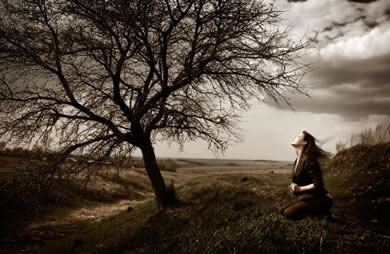|
I turned the corner and headed down aisle #6--the baking section of my local grocery store--eyes peeled for the "new kid" on the shelf. The new zero-calorie sweetener, Nectresse from the makers of Splenda. There it was, in canister and packet form. The label read: "100% natural" and "made from monk fruit." Really? 100% natural? Made from monk fruit? Now, it was time to investigate. What is monk fruit? Monk fruit (a dark-green, plum size fruit) comes from the plant, Siraitia grosvenorii, which is native to southern China and northern Thailand. The fruit also goes by the names Swingle fruit, Buddha fruit, luo han guo or luo han kuo. This fruit is noted for its intense sweetness, which comes from naturally occurring sweet constituents called mogrosides. In pure form, mogrosides are up to 300 times sweeter than table sugar. There are five different mogrosides, numbered from I to V, with mogroside V being the desired component. To remove the interfering components and aromas, manufacturers used an ethanol solvent solution. How do they extract the sweetener? The end product is a powdered concentrate of mogroside V which is about 150 times sweeter than table sugar (depending on the mogroside V concentration). This non-nutritive sweetener is calorie-free and diabetic-safe, as it does not raise blood sugar levels. The powdered concentrate is very soluble in water and ethanol, heat stable, and can be stored for long periods of time without changes in taste, smell, or appearance. Is it safe to eat? It is classified by the US Food and Drug Administration (FDA) as Generally Recognized As Safe (GRAS). Therefore, it can be used as a tabletop sweetener, as a food and beverage ingredient (gums, baked goods, snack bars, candy, drinks, etc), or as a component in other sweetener blends (since it may have an aftertaste at higher levels on its own). There is very preliminary research investigating possible health benefits—anti-cancer properties, antioxidant activities, benefits for diabetes with insulin production. However, much more research is needed before any health claims can be made. What is in Nectresse? And is it 100% natural? Nectresse is neither 100% monk fruit nor the powdered concentrate mogroside V, which would have a strong aftertaste. Rather, Nectresse is a mixture of ingredients (listed from greatest to least amounts): erythritol, sugar, monk fruit extract, and molasses.
So if Nectresse contains all these other ingredients, is it really "100% natural"? No, it's not 100% natural. While all the ingredients in Nectresse can be found naturally in a food—the forms in which most appear in this sweetener have had some man-made interventions. I've said the same thing about artificial sweeteners touted to be "all natural." However, while I do have trouble with the marketing, I have no problem with the product. I see it as a tasty addition that can add sweetness for fewer calories. This product has not been as extensively studied as other sweeteners on the market. While it is safe to use—moderation is still important, as with all artificial sweeteners. Buy it and try it. See if you like it and report back. If it's a "zero-calorie sweetener," can I eat as much of it as I want? For people with diabetes and/or those on a weight-loss plan, amounts up to one teaspoon per meal are considered a "free food." If you use more than this, consult with a dietitian about counting the carbohydrates and calories in your eating plan. Can I bake and cook with it? Yes, you can. Nectresse is granulated like sugar and dissolves easily. It is heat-stable in baking. In sweetness, 1/4 teaspoon Nectresse is equal to one teaspoon of sugar, or one packet is equal to two teaspoons of sugar. When baking with alternative sweeteners, such as Nectresse or Splenda, choose a recipe that has been specifically developed to use such ingredients rather than altering your own. Once you try an existing recipe (check out the Nectresse website for Apricot Fig Cinnamon Rolls, Apple Cinnamon Pancakes, Peanut Butter Granola and more), you can start experimenting with your own. Have you tried Nectresse? Will you? If so, what did you think? Photo credit: Nectresse media gallery
|
More From SparkPeople
|















